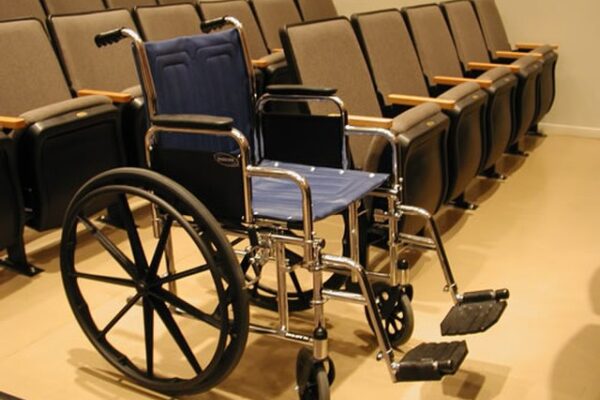
Twelve years ago disaster struck when Gert-Jan Oskam, a Dutchman, was visiting China. A cycling accident left him paralyzed in his legs and partially in his arms. He never thought he’d walk again, but that was before the researchers studying his case turned on the computer they installed in his brain.
Twelve years ago, Gert-Jan Oskam was left paralyzed in a bicycle accident.
Now, he can stand, walk and climb stairs thanks to an experimental operation by neuroscientists and surgeons in Switzerland. pic.twitter.com/4ab7mmhJv5
— The Associated Press (@AP) May 26, 2023
A spinal cord injury interrupts the communication between the brain and the region of the spinal cord that produces walking, but doctors have discovered a way to create a “digital bridge” that restores the connection.
CNN writes that Dr. Grégoire Courtine and colleagues from the Swiss Federal Institute of Technology in Lausanne developed and implanted a “brain-spine interface” that creates a direct neurological link between the brain and spinal cord. Implants in the brain track intentions for movement, which are wirelessly transferred to a processing unit that a person wears externally, like a backpack. The intentions are translated into commands that the processing unit sends back through the second implant to stimulate muscles.
The research findings, published Wednesday in the journal Nature, outline successful outcomes for one study participant from the Netherlands.
“My wish was to walk again, and I believed it was possible,” Oskam said at a briefing with journalists this week. “I tried many things before, and now I have to learn how to walk normal again, like natural, because this is how the system works.”
Oskam said he can walk at least 100 meters (about 330 feet), depending on the day, and stand without using his hands for a few minutes. He said it’s useful in his daily life, like when he recently had something to paint but had no one to help, so he stood and did it himself.
“I feel like a toddler, learning to walk again,” Gert-Jan told the BBC. He can says he can stand and climb stairs.
“The discovery allowed Mr. Oskam, 40, to stand, walk and ascend a steep ramp with only the assistance of a walker. More than a year after the implant was inserted, he has retained these abilities and has actually showed signs of neurological recovery, walking with crutches even when the implant was switched off, writes The New York Times.
“We’ve captured the thoughts of Gert-Jan, and translated these thoughts into a stimulation of the spinal cord to re-establish voluntary movement,” Dr. Courtine said during a briefing with media outlets.
The Times continued: “There have been a number of advances in technological spinal cord injury treatment in recent decades. In 2016, a group of scientists led by Dr. Courtine was able to restore the ability to walk in paralyzed monkeys, and another helped a man regain control of his crippled hand. In 2018, a different group of scientists, also led by Dr. Courtine, devised a way to stimulate the brain with electrical-pulse generators, allowing partially paralyzed people to walk and ride bicycles again. Last year, more advanced brain stimulation procedures allowed paralyzed subjects to swim, walk and cycle within a single day of treatment.
Mr. Oskam had undergone stimulation procedures in previous years, and had even regained some ability to walk, but eventually his improvement plateaued. At the press briefing, Mr. Oskam said that these stimulation technologies had left him feeling that there was something foreign about the locomotion, an alien distance between his mind and body.
The new interface changed this, he said: “The stimulation before was controlling me, and now I’m controlling the stimulation.”
[Read More: Honeymooners Heard Screaming And Did The Right Thing]









